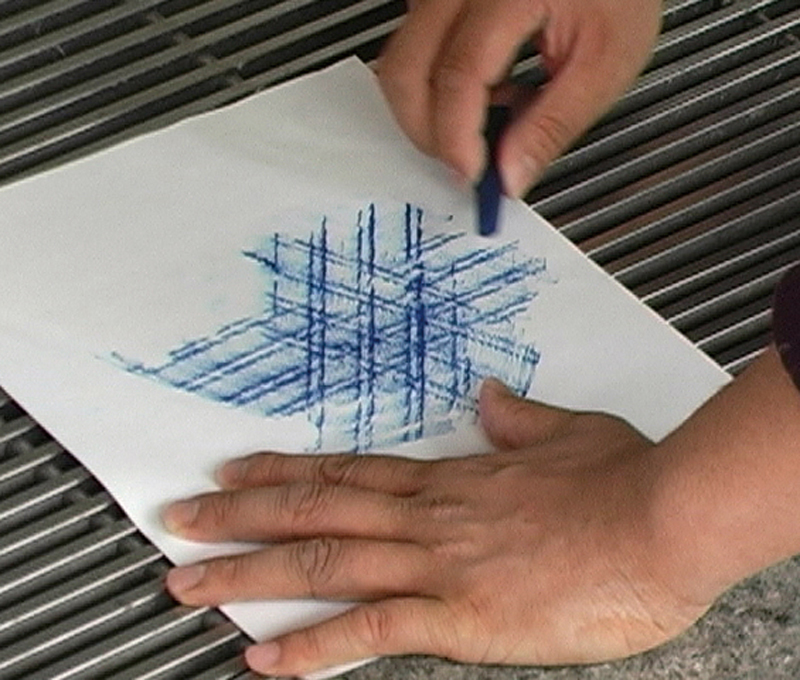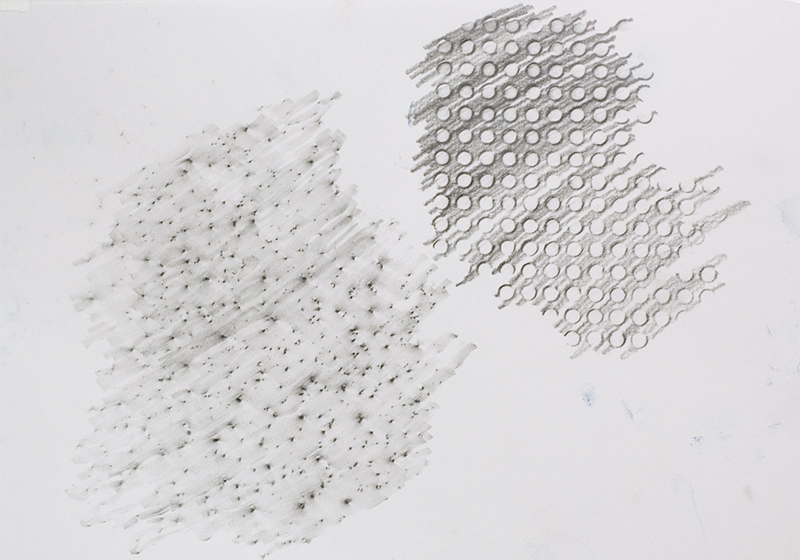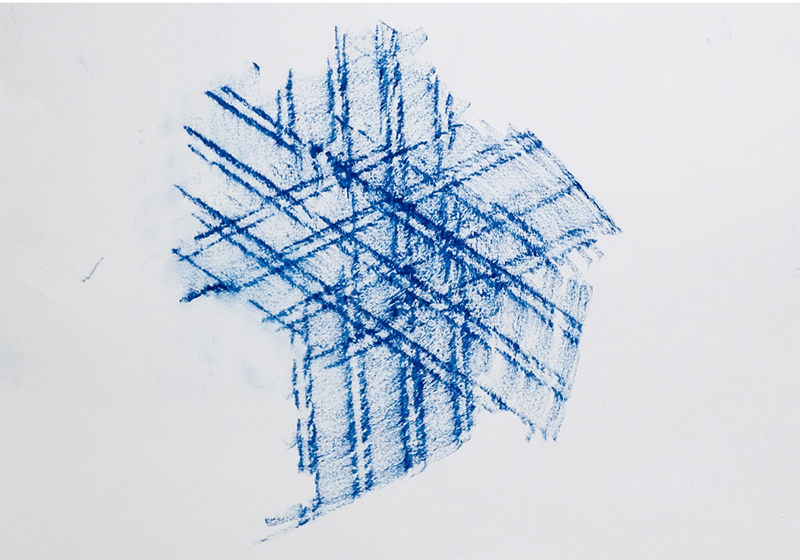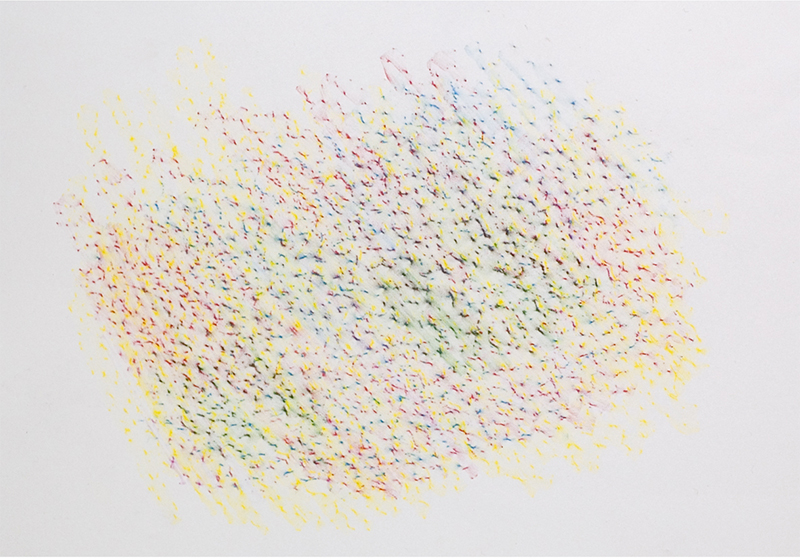Frottage
フロッタージュ
Frottage
CATEGORIES
Frottage is the technique of copying the texture and shape of an object by placing a sheet of paper on top and rubbing with a pencil or similar implement. The term comes from the French word, “frotter”, meaning, “to rub”.
There are a variety of common objects that could be used for frottage if they have tactile textures on the surface which are suitably defined, such as a board with a wood grain surface, stone, manhole covers, coarse cloth, leaves and coins, etc. The type of paper to use should be fairly thin and flexible. Quality paper or thin washi paper that won’t tear when rubbed is the most suitable. Art paper and other thick types are difficult to trace over the surface of the object and are not suitable. A pencil, Conté crayon, pastel crayon or other suitably hard drawing instrument rubbed evenly and thoroughly over a sheet of paper placed on top of the object will create a dark shade on the protruding parts of the object and lighter shades over the inverse parts. The different shades will bring out the textures and outline of the object. It is also possible to obtain different expressive effects from the same object depending on the drawing implement and paper used.
The technique of transferring patterns and engravings on paper takuhon (rubbing, ink impression) has been used in the East since antiquity and comprises two methods: dry rubbing and wet rubbing. Dry rubbing used the same principle as frottage. The texture of the subject was transferred onto washi paper by rubbing it with ink known as “bell ink” (hardened mixture of pine-soot ink and wax molded flat into the shape of a temple bell). In wet rubbing, moistened washi paper is struck with a piece of wadding called a “tampo”. The pattern that is transferred onto the paper is then colored using tampo soaked with paint.
Frottage reflects the creator’s intent in terms of choice of material and composition but the image that is transcribed surrenders to spontaneity beyond the control and volition of the creator. The image created in this spontaneous and subliminal process has the effect of expanding the imagination of the viewer and surrealists such as Max Ernst were devotees of frottage and decalcomania as automatism techniques. Grattage subsequently emerged as a variation of frottage. This is the process of painting a canvas with oils, pressing it against the subject from behind and then scraping the paint from projecting sections on the canvas surface to transfer the shape of the object.
Depending on the material from which the subject is comprised, frottage can result in damage and soiling, etc. so care is required.

- Expressive effects
 Pencil strokes on a piece of high-quality paper
Pencil strokes on a piece of high-quality paper  Charcoal strokes on a piece of charcoal paper
Charcoal strokes on a piece of charcoal paper Pastel strokes on a piece of high-quality paper
(achieved by making strokes while turning the paper)
Pastel strokes on a piece of high-quality paper
(achieved by making strokes while turning the paper) Colored pencil strokes on a piece of high-quality paper
(using multiple colors)
Colored pencil strokes on a piece of high-quality paper
(using multiple colors) Oil pastel strokes on a piece of black high-quality paper
Oil pastel strokes on a piece of black high-quality paper
